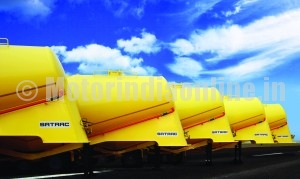
Satrac Engineering Pvt. Ltd., has emerged as a leading application provider in the Indian commercial vehicle segment. The company has pioneered numerous innovations in the field, as it continuously strives to offer highly reliable customized products and solutions to its growing base of customers. With new products being added to an already versatile product portfolio, Satrac is bullish on further strengthening its position as a pioneer in the application builder segment. Mr. M. C. Bantwal, Director, Satrac, talks to Motorindia in an exclusive interview.
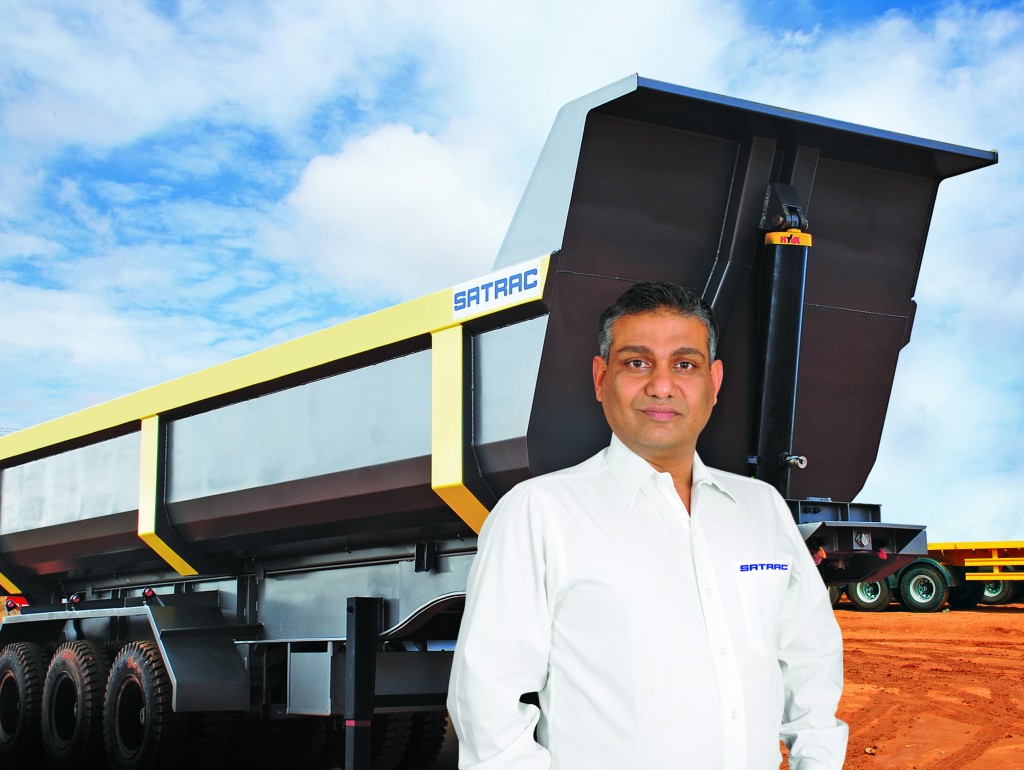
Excerpts:
Please take us through the establishment and growth story of Satrac.
Satrac made a modest beginning in 1994 when the trailer and body building sector was dominated by unorganized players. Breaking the mould albeit with small steps, Satrac was the first application building company to be professionally managed and run by a team of engineers, offering products and services which were then unheard of in the Indian industry. Ever since, Satrac has pioneered the organized transport application segment in India. With our new plant at Nelmangala, Bangalore, equipped with state-of-the-art facilities, we continue to lead the way by launching innovative new products every year, and today Satrac has become a name synonymous with high quality and exceptional reliability.
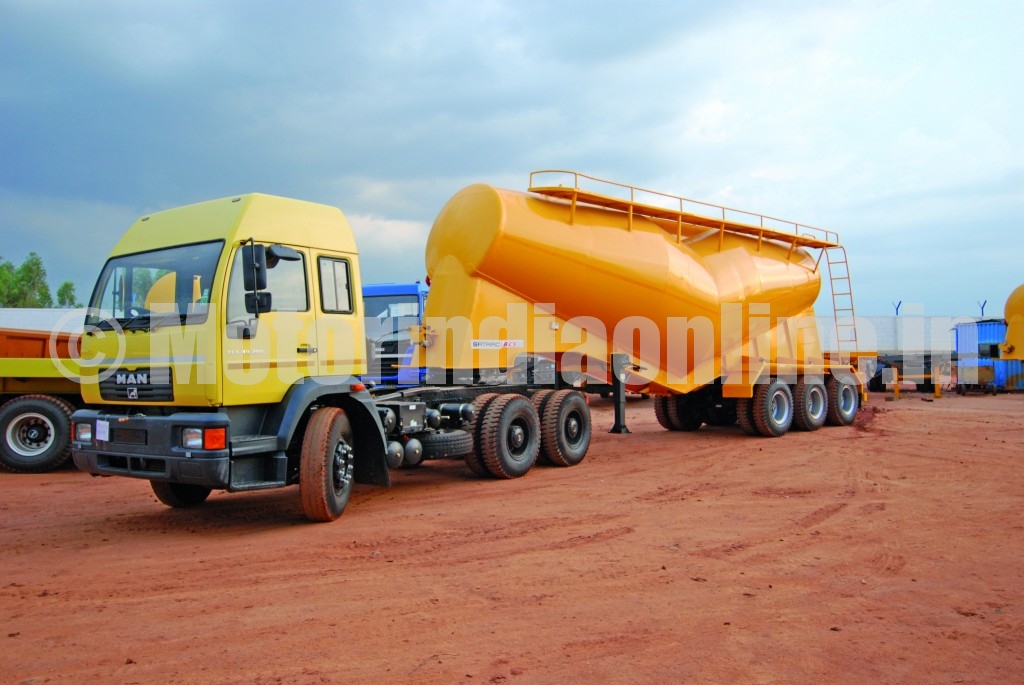
What is the product range you offer?
Satrac optimizes commercial vehicles by offering products and solutions for maximum efficiency based on customers’ logistic requirements.
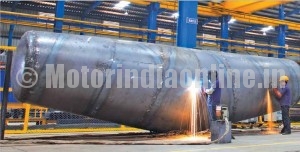
Satrac products could be grouped under four verticals:
• Trailers – Flat Beds, Side Walled Trailers, Semi Low Beds, Low Beds, Tip Trailers.
• Body Building (on rigid chassis) – Tippers, Containers, Load Bodies.
• Liquids & Powdered Bulk – Fuel Tankers, Fuel Bowsers, Cement/fly-ash Bulkers, Edible Oil Tankers, Water Tankers
• Automotive Logistics – Inbound OEM Parts Carriers, Car Carriers, Bike/Scooter Carriers, Truck and chassis Carriers, Recovery Vehicles.
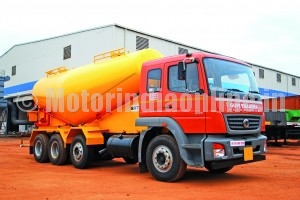
In each of the verticals, we have expert teams with sound knowledge in the particular field of operation. We also have separate production teams and engineers for all the verticals to ensure that there is no dilution in product quality.
Could you highlight the new developments underway in terms of products, technologies and design?
Satrac has always believed in launching products after extensive development and testing. Our design strategy has been to offer products which would have distinct advantages over what is already available in the market, in addition to the fact that they would be better in terms of quality and performance. We have a robust and stringent development to testing cycle which ensures that when the product reaches the customer it delivers the best possible performance.
Towards the end of last year, we had launched our range of car and truck chassis carriers which offer distinct advantages and cater to customers looking for high quality products. This year, we have launched our range of fuel tankers which are made with high strength steel, specially designed to avoid rupture in case of accidents, an essential aspect for these kinds of vehicles. Similarly our trailers and truck bodies built using Domex steel is revolutionizing the bulk goods transport segment to an such extent that in some markets we have a 100 per cent market share.

In the automotive logistics segment, Satrac has recently introduced an innovative product which makes it possible for two-wheelers and cars to be transported in the same carrier, resulting in an increase in asset utilization by 100 per cent.
Other products such as reefer trucks are in the pipeline and are likely to be launched towards the end of 2013. Our reefer trucks will be lighter than the ones currently available with sufficient strength to suit the Indian road and working conditions. We are in talks with a few European and Middle East companies for collaboration in this segment and would be finalizing an agreement in the next two months.
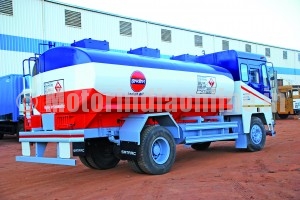
Are you offering solutions for specific applications such as ODC transportation, hazardous goods transportation and petroleum transportation (20 KL, 35 KL, 40 KL tankers)?
Satrac has been in the forefront in offering specifically designed products for ODC and heavy-weight cargo. Our advantage has been in designing trailers based on customer requirements for particular applications and terrains. We have strong presence in segments such as machinery transport, bridge and flyover transport, wind mill turbine and blade transport, construction and mining equipment transport among others.
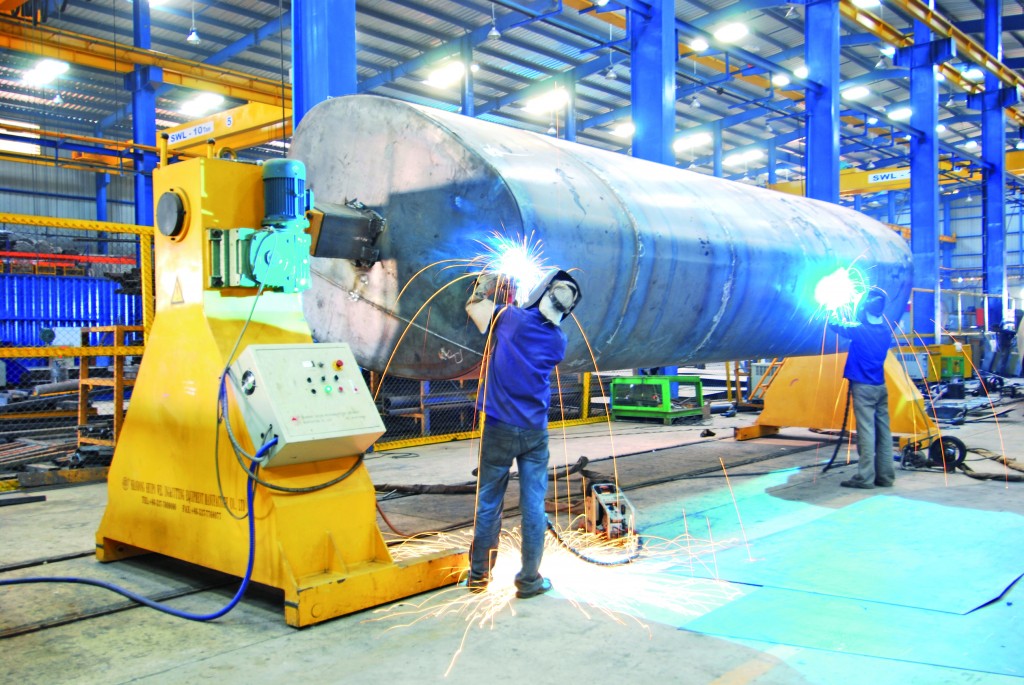
In the petroleum and fuel transport segment we have recently launched our entire range of tankers starting from 8 KL to 24 KL which come with advanced safety features. We also have a range of bottom-loading tankers which is a standard in developed markets across the world. We will also be launching 35 KL and 40 KL tankers in the near future. With aluminium tanks growing in popularity owing to the huge benefits they offer, we are in talks with a company for a possible overseas collaboration.
Quick facts on Satrac’s manufacturing facility
• World-class manufacturing facility at Nelmangala, Bangalore, operating with a professional team of engineers
• High level of automation with best-in-class equipment
• Facility capable of manufacturing multiple products
• 1,10,000 sq. ft. of manufacturing area with capacity to expand into higher volume mass production
• 10/15/25 ton EOT cranes for safe and efficient material handling
• Workforce of 350 people which includes over 100 qualified welders
• Plant capacity of up to 600 units (multiple products) per month in three shifts. Currently manufacturing around 250 units a month in two shifts.
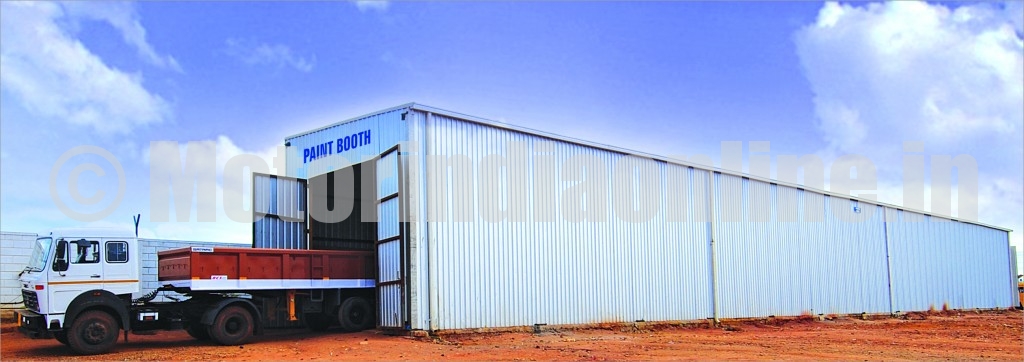
There are many application builders in India. Why would a customer go for Satrac? What are your USPs?
Satrac is able to understand customers’ exact requirements and offer products which maximizes the overall efficiency of logistic operations. Our domain expertise and extensive experience aided by CAD/CAM helps us design products which are most suitable for the Indian market. Our state-of-the-art production facility and stringent quality control ensure that all our products are extremely reliable. All this is supported by our pan-India service network and company-owned service points which help customers enjoy a longer product life. Overall, Satrac guarantees the lowest total cost of ownership (TCO) and a quicker return on investment. Incidentally, our products also have also a premium in the second-hand market which helps in further bringing down the TCO.
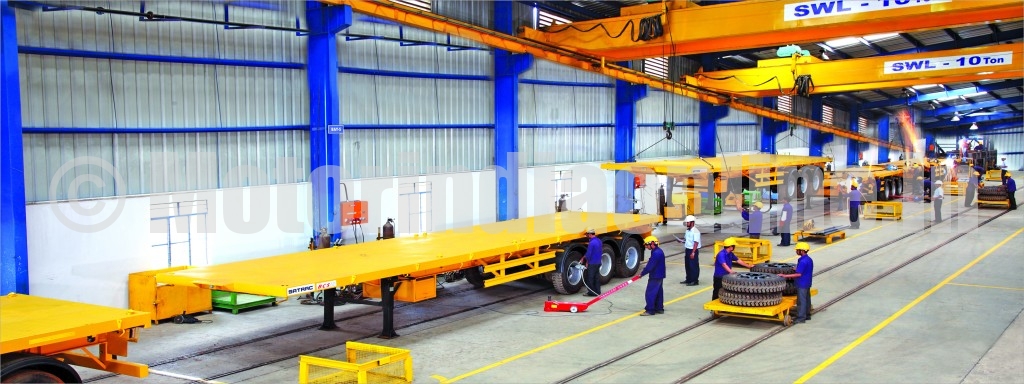
What is your OEM customer base? Are you a 100 per cent supplier to any OEM?
We are a 100 per cent supplier to Ashok Leyland for their trailers and bulkers which are sold as fully-built vehicles (FBVs). We are currently supplying to Daimler, Kamaz Vectra and Volvo while we actively work with other vehicle manufacturers, including Tata Motors, MAN, Mahindra Navistar and Eicher in designing and offering customized application solutions. We are in the final stage of talks with all the OEMs, and direct supplies will be commencing soon.
From a raw material and components perspective, are you working on using special steel for manufacturing trailers to give customers added benefits?
We have developed low weight trailers and truck bodies using Domex steel which has reduced the unladen weight by close to 25 per cent which provides tremendous benefits to customers. In fact, we have used high strength steel as a standard for all our applications, thereby increasing the life time of our products.
On the technology front, have you fitted ABS, EBS, air suspension, etc., for customers?
Satrac is among the first and few trailer companies offering ABS in its products. We have also pioneered the pneumatic suspension trailers in the Indian market. We have recently supplied trailers with Electronic Braking System (EBS) and trailer stability control for one of our customers operating in the extremely hazardous goods segment, which is again a first in India. All our trailers come with Brake Control System (BCS) as a standard fitment, which ensures that there is no brake locking under ‘no load‘ condition of the trailer. As a result of BCS, our customers have seen an increase in tyre life by around 20,000 km, a significant saving indeed.
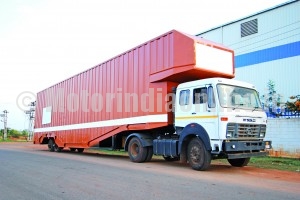
How do you service your customers across the country? Please highlight your service set-up and the value-additions you offer customers.
Satrac has an extensive service network operating in the South, West and now North India. We have a dedicated area in our manufacturing plant at Bangalore to attend to major accident repairs. We also have company-owned service centers attending to all repairs including minor accident repairs in areas of high trailer density such as Kadapa (Andhra Pradesh), Bagalkot (Karnataka) and Chandrapur (Maharashtra). We have recently opened a service outlet in Gurgaon to cater to requirements in the North regions. Apart from this, we have our service technicians stationed in Chennai, Hyderabad and Mumbai, in addition to fully-equipped mobile service teams attending to breakdowns on-site. We carry stocks of all spareparts at our head office and service outlets supported by an efficient logistics system to ensure that the parts reach our customers on time.
What are your views on the tussle between the organized and unorganized trailer segments?
There are two reasons as to why the organized applications industry will grow in India. One is because the applications industry in our country is presently dominated by the unorganized industry, mainly due to cost factors. As the profile of customers changes from owning a single truck to managing a fleet of over a hundreds vehicles, they will be looking at operating the fleet with minimum downtime and operating costs. Also, such customers will operate on the basis of life cycle costs which would give due returns for the higher initial investment. Furthermore, these companies will work on a transparent model which rules out the possibility of tax evasion, another encouraging sign for the organized segment.
Second, with rapid growth in the field of transport logistics, the concept of ‘one size fits all’ would no longer work. With rising fuel and commodity costs, the need of the hour will be optimization of vehicles with trucks and trailers for specific applications, thereby providing maximum yield and efficiency. This is where companies that have specialized in the field like Satrac have an upper hand as we are best equipped to deliver products and solutions catering to tailor-made customer needs. Multinational companies like Toyota are a good example when it comes to using optimized solutions. Toyota uses trucks which are specifically designed for its manufacturing operations, which gives a huge boost to its operating efficiency.
What is the current trailer market size in India? How do you see the market evolving in the next three to five years?
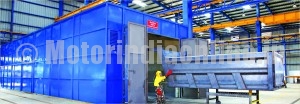 The current size of the Indian trailer market is 30,000 to 35,000 units annually. We foresee a modest growth of 10 per cent year-on-year. With a complete ban on overloading in most States, trailers offer the best tonne per kilometer compared to any other type of commercial vehicle. The market has to move towards higher GVW vehicles for which the tractor-trailer is the perfect solution.
The current size of the Indian trailer market is 30,000 to 35,000 units annually. We foresee a modest growth of 10 per cent year-on-year. With a complete ban on overloading in most States, trailers offer the best tonne per kilometer compared to any other type of commercial vehicle. The market has to move towards higher GVW vehicles for which the tractor-trailer is the perfect solution.
Obscure as it may sound, the acute driver shortage our country is currently facing is hitting the industry hard. One good solution to this problem would be to opt for higher GVW vehicles to transport same loads with less number of vehicles as well as drivers. As a result, if the transporter uses three 16 tonners vehicles with three drivers for a particular job, he would only require one 49 tonner with a single driver to do the same job while also saving on other costs.